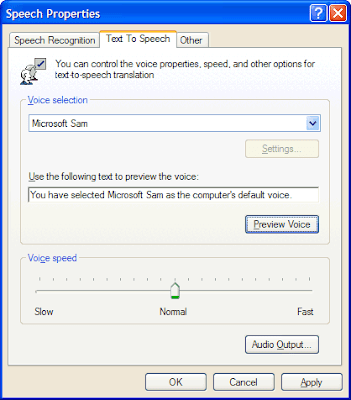


The Azure App Service extension for VS Code (installed from within VS Code).Visual Studio Code - installed to your local machine.Node.js 10.1+ and npm - installed to your local machine.You may choose to make this call if you have a client-only application without a server. The client call demonstrates a direct call to the Speech service using the SDK.The second server call is for shorter term text and is held in-memory before returned to the client.

You would typically use this for longer text or text you know should be served more than once. The first server call creates a file on the server then returns it to the client.This application provides three different calls to convert speech to text: new HTML form, with JavaScript, provides a client-side call to the Speech service.new route for an HTML form to allow you to enter your information.new route for the server API to provide conversion from text to speech, returning an MP3 stream.The tutorial takes a minimal Express.js app and adds functionality using a combination of: Server JavaScript gets audio from in-memory arrayBuffer.Server JavaScript gets audio from file (*.MP3).This tutorial shows 3 different ways to convert text to speech from Azure Cognitive Services Speech: Converting text to speech allows you to provide audio without the cost of manually generating the audio. An event is normally divided into 4 topics - context, origin, type and action.In this tutorial, add Cognitive Services Speech to an existing Express.js app to add conversion from text to speech using the Cognitive Services Speech service. The event type is a string containing topics. To subscribe to events you will need to pass a context key (used when unsubscribing) as well as the event type and the event handler function. PubSub is a loosly coupled model which enables client applications to hook in to the Talkify pipeline. The newest, and primary, model is the PubSub model. Talkify provides two event models - PubSub and classic callbacks. Users can turn this off in the control center UIĪ voice object from our backend voice API or at the very least an object wih a name property including a valid voice nameįor example: document.querySelectorAll("button") Presets enhanced visibility to activated. Users can turn this off in the control center UI activate ( ) MethodĬall this method to deactivate the feature This feature allows the user to select/mark text using the mouse and have that text read aloud. Unbinds all TTS functionality from the form Adjusts the pitch of the voice.Įxample: (document.getElementById("form-id")) Method Any value above 0 adds to the voices standard break length. Sets the player to normal mode (opposite of whispering) Some voices spell out capital letters, which might be unwanted, this setting will read the content of the element as lower case When these attributes are present, Talkify will use them as playback settings. The following attributes can be added to any element that Talkify is connected to. These settings will override general settings. These settings are only supported by the TtsPlayer for now. This has the potential of creating a smoother voice experience. When useSSML is active, Talkify will translate the following markup into SSML.


 0 kommentar(er)
0 kommentar(er)
